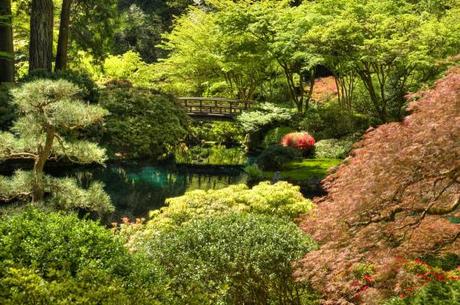
Influenced by Shinto, Buddhist, and Taoist philosophies, the natural backdrop at the Japanese Garden in Portland, Oregon, is an artfully arranged tableau.
With extended travels in Europe next on the Everywhere Once agenda, it’s going to be a while before we trek across Asia. In the meantime, Asian-themed and inspired places and exhibits (like the majestic Terracotta Warriors) are whetting our appetites for the sites we’ll see on the continent. Helping to further fuel the wanderlust were visits to Portland’s Japanese and Chinese gardens.
Portland Japanese Garden
Although Portland averages 150 rainy days a year, the weather didn’t dampen our spring visit to the city. Abundant sunshine compelled us outdoors, including to our first sightseeing stop: the Portland Japanese Garden, where a walk is almost as stress-relieving as a yoga session. How could it not be when every plant, pond, and pagoda has been strategically placed to create a sense of peace and tranquility?
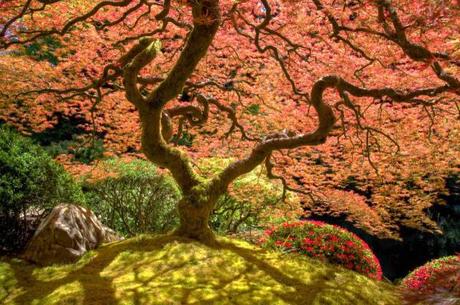
A Japanese Laceleaf Maple graces the Flat Garden, one of five different gardens to explore.
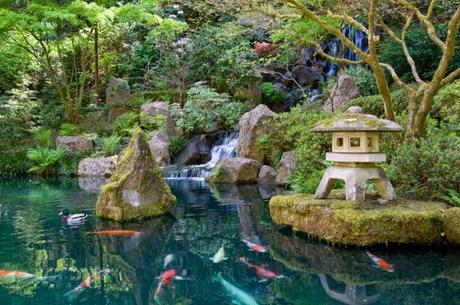
A waterfall cascades in the Strolling Pond Garden, reminiscent of recreational sites the wealthy created on their estates in ancient Japan. Water, the life-giving force, and stone, the “bones” of a landscape, are two of the essential elements of a Japanese garden. The resident colorful koi are there for their graceful and calming presence. The duck dropped by for a visit.
Lan Su Chinese Garden
Unlike the Japanese Garden, which sprawls across several acres in the even larger Washington Park, the Lan Su Chinese Garden is tucked into a single city block amid skyscrapers and heavily trafficked streets. What it lacks in acreage, it makes up for with intriguing architecture, which is as much of a focus as the foliage.
Artisans from Suzhou, China, Portland’s sister city, journeyed eastward in 1999 to transform the space into a Ming Dynasty-era garden—a place for its wealthy owners to escape the problems of everyday life and also a way to show off their status. These talented craftspeople even brought their own tools and materials, hauling some 500 tons of granite boulders across the Pacific along with roof and floor tiles, hand-carved woodwork, and latticed windows. A lake, a tea house, pagodas, and other buildings—including those reserved for scholarly pursuits or music-making and game-playing—harmonize with the natural surroundings, creating a flow between the indoor and outdoor spaces.
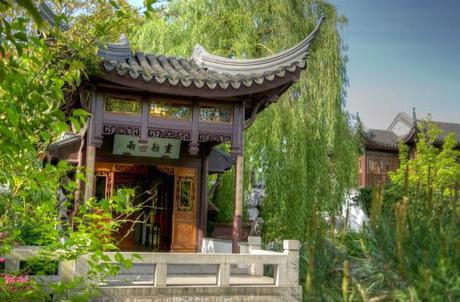
Even the lyrical names given to garden spaces inspire a sense of calm, like the Courtyard of Tranquility or, seen here, a pavilion called Painted Boat in Misty Rain. The boat-shaped structure represents the vessel that traveled from Suzhou to Portland.

The Scholar’s Study was a place to read, write poetry, and practice calligraphy. It’s also where the men in the family would prep for the civil service exams that could secure them prosperous jobs.
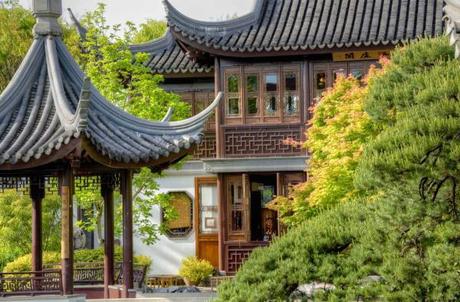
In the Tower of Cosmic Reflections (background), women would manage household finances and family affairs. This building contains a tea house which, unlike the ceremonial one in the Japanese Garden, is open for business. They serve tea in a format we’re familiar with—flights, with three or more varieties to sample and savor.
45.523452 -122.676207
